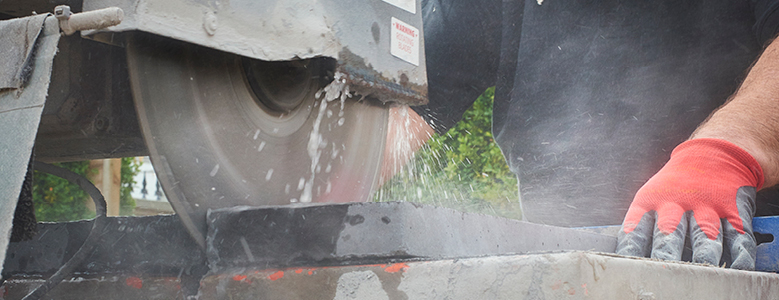We’re sorry, but some customers are experiencing intermittent issues with our Online Account (for members). We’re working hard to fix this as quickly as we can.

Silica – the next asbestos?
Download the report
Our joint report explores the risk of silica exposure for construction workers and the implications for policy makers.
Download: Silica – the next asbestos?We worked with the All Party Parliamentary Group (APPG) for Respiratory Health on an inquiry into silicosis in the construction industry. The joint report, called ‘Silica – the next asbestos?’, explores the risk of silica exposure to construction workers and the implications for policy makers.
Why focus on silica?
Silicosis is the most common chronic occupational lung disease worldwide1. Although there’s no cure, it’s entirely preventable.
Silica is a natural substance found in concrete, bricks, tiles and mortar – materials commonly used in construction. When ‘fractured’ through processes such as stonecutting, drilling and polishing, it becomes respirable crystalline silica (RCS). Construction workers are at risk of developing silicosis when they inhale RCS over extended periods.
Our initial research revealed that over the past 5 years there’d been no debates in Parliament on the dangers of silica dust.
Our work with the All Party Parliamentary Group
In 2019 we approached the All Party Parliamentary Group (APPG) for Respiratory Health to discuss a range of respiratory conditions prevalent in the construction industry. The APPG, chaired by Jim Shannon MP, was brought together to raise awareness of the importance of respiratory health and to promote effective policy for improving treatments and outcomes.
This joint report concludes 6 months of evidence-gathering from a range of stakeholders. It’s a detailed and extensive inquiry into the disease burden of silicosis, the diagnosis, treatment and management of the disease and the impact on patients’ lives.
One of the key takeaways is that we don’t have a true picture of the disease and that there’s a profound lack of awareness among construction workers about the risks of RCS exposure. According to the Health and Safety Executive, ‘silica is the biggest risk to construction workers after asbestos’. With around 600,000 workers exposed to silica in the UK – it needs our attention now.
“The aim of this report is to start a long-overdue conversation among and between Government, Parliament, health bodies and the construction industry about how to tackle this entirely preventable, often fatal, condition. I want to thank all the organisations and individuals who took the time to submit evidence, along with the officers of the APPG for their interest in and commitment to raising awareness of silicosis.”
Patrick Heath-Lay, Chief Executive, B&CE
“The inquiry has given us real insights into the outstanding work carried out in the construction industry and the hazards that are too often part of everyday life for those who work within it. We hope that the outcomes of the report will assist the Health and Safety Executive, the Government and the construction industry to protect its workforce from preventable injury and illnesses.”
Jim Shannon MP, Chair of the APPG for Respiratory Health
Our recommendations
So, what next? Our joint report with the APPG makes 10 detailed recommendations to Government. This includes:
- calling for silicosis to be included as a ‘reportable condition’ under existing regulations
- developing a targeted industry awareness programme
- introducing a screening programme for those exposed to RCS
- lowering the workplace exposure limit to bring RCS into line with other developed nations.
Download the report
Our joint report explores the risk of silica exposure for construction workers and the implications for policy makers.
Download: Silica – the next asbestos?
1 M. Nola and S. Dotlić ‘The Respiratory System’ in Damjanov, I (ed) Pathology Secrets Philadelphia: Mosby Elsvier (2009) p203
